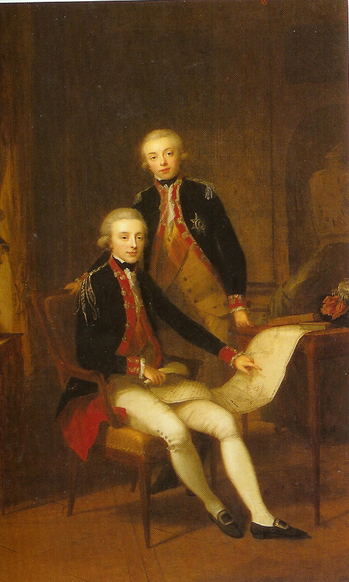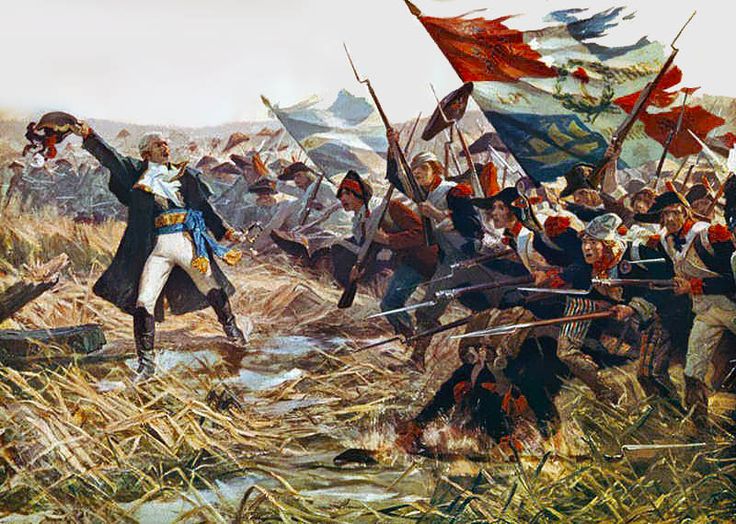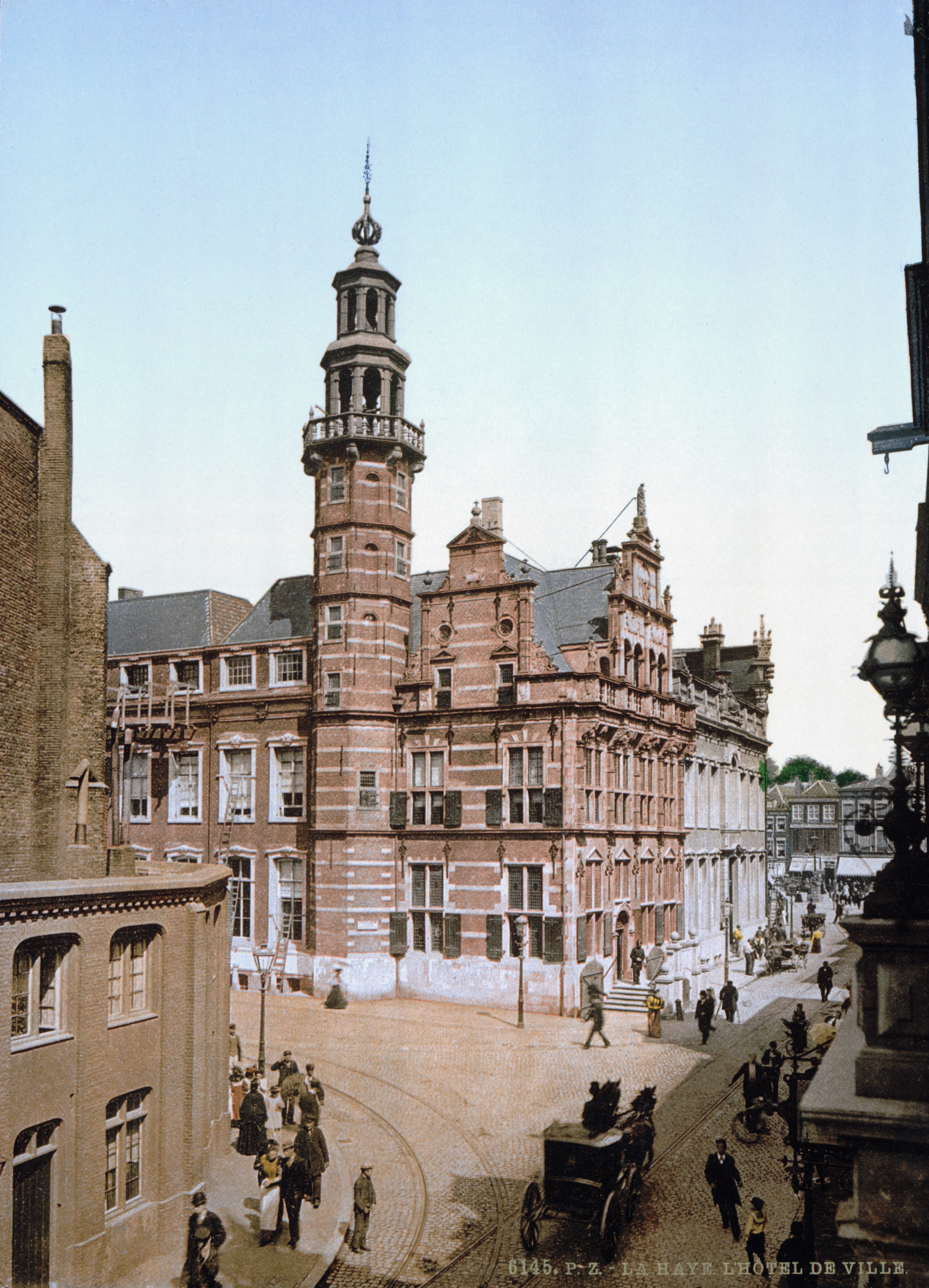|
Willem I Of The Netherlands
William I (Willem Frederik; 24 August 1772 – 12 December 1843) was King of the Netherlands and Grand Duke of Luxembourg from 1815 until his abdication in 1840. Born as the son of William V, Prince of Orange, the last stadtholder of the Dutch Republic, and Wilhelmina of Prussia, William experienced significant political upheavals early in life. He fought against the French invasion during the Flanders campaign, and after the Batavian Revolution in 1795, his family went into exile. He briefly ruled the Principality of Nassau-Orange-Fulda before Napoleon's French troops' occupation forced him out of power. Following the defeat of Napoleon in 1814, William was invited back to the Netherlands, where he proclaimed himself Sovereign Prince of the United Netherlands. In 1815, William raised the Netherlands to a kingdom and concurrently became the grand duke of Luxembourg. His reign saw the adoption of a new constitution, which granted him extensive powers. He was a strong propon ... [...More Info...] [...Related Items...] OR: [Wikipedia] [Google] [Baidu] |
Joseph Paelinck
Joseph Paelinck, (20 March 1781 – 19 June 1839) was a painter from the Southern Netherlands. Biography Paelinck attended the Royal Academy of Fine Arts (Ghent) and then with Jacques-Louis David in Paris, where he painted in 1804 ''A Judgment of Paris'', which earned him his first Academy Art Award for Ghent. After he had worked there a short time as a teacher, he went to Rome and stayed there for five years. He painted, among other things: ''Rome under Augustus'' for the Quirinal Palace and the ''Discovery of the Cross'' for St. Michael's Church in Ghent. He was later a professor at the Académie royale de peinture et de sculpture in Brussels. His many pupils included Charles Baugniet, François Antoine Bodumont, Edouard de Bièfve, Élisa de Gamond, Félix De Vigne, Jean Joseph Geens, Jozef Geirnaert, Joseph Meganck, Fanny Paelinck-Horgnies, Alfred Stevens, Joseph Cohen de Vries and Abraham Johannes Zeeman. [...More Info...] [...Related Items...] OR: [Wikipedia] [Google] [Baidu] |
Princess Marianne Of The Netherlands
Princess Marianne of the Netherlands, Princess of Orange-Nassau (''Wilhelmina Frederika Louise Charlotte Marianne''; 9 May 1810 – 29 May 1883) was the youngest child of King William I of the Netherlands and Wilhelmine of Prussia, Queen of the Netherlands, Princess Wilhelmine of Prussia. Princess Marianne was a woman who thought and lived very unconventionally for her time because she had left her unfaithful husband Prince Albert of Prussia (1809–1872), Prince Albert of Prussia and had an illegitimate son (whom she openly recognized) with her partner Johannes van Rossum, with whom she also lived in a common-law marriage. She was banished from the Kingdom of Prussia. An avid art collector and Patronage#Arts, patron, she made her new residence, :de:Schloss Reinhartshausen, Schloss Reinhartshausen in Erbach, Rheingau, Erbach, a cultural attraction on the Rhine. Through her remarkable social commitment to the needy, especially in the Rheingau and Silesia, she gained great symp ... [...More Info...] [...Related Items...] OR: [Wikipedia] [Google] [Baidu] |
Battle Of Lincelles
The Battle of Lincelles was an action that took place as part of a larger manoeuvre on 17 August 1793 in the Low Countries theatre of the War of the First Coalition, Flanders Campaign of the War of the First Coalition. It was fought between the forces of Revolutionary France under the command of Jean Baptiste Jourdan and , versus those of Great Britain under Frederick Augustus, Duke of York and Albany and the Dutch Republic under the William I of the Netherlands, Hereditary Prince of Orange. The action resulted in a coalition victory. The battle In the Autumn of 1793 the Allied forces of Prince Josias of Saxe-Coburg-Saalfeld were poised to invade France. The William I of the Netherlands, Hereditary Prince of Orange held Menen, Menin with 10,000 Dutch troops, with instructions to cover the movement of the corps of Prince Frederick, Duke of York and Albany in his advance towards Dunkirk. To facilitate this and take advantage of York's nearby support Orange decided to lead a col ... [...More Info...] [...Related Items...] OR: [Wikipedia] [Google] [Baidu] |
Battle Of Veurne (1793)
The Battle of Furnes, also known as Battle of Veurne and Battle of Bulskamp, was fought on 20 August 1297 between French and Flemish forces. The French were led by Robert II of Artois and the Flemish by Guy of Dampierre. The French forces were victorious. However, Robert's son Philip was gravely wounded during the battle and died a year later of his wounds.Charles T. Wood, ''The French Apanages and the Capetian Monarchy, 1224-1328'', (Harvard University Press, 1966), 59. The Flemish were supported by Walram, Count of Jülich Walram, Count of Jülich (1240/45 – c. August 1297, after Battle of Furnes) was the second son of William IV, Count of Jülich and Richardis of Guelders, daughter of Gerard III, Count of Guelders. Biography In 1278, Walram succeeded his father a ..., who was killed during the battle. Notes Battles of the Franco-Flemish War 1297 in Europe 1290s in France Veurne Conflicts in 1297 History of Belgian Limburg 13th century in the county of Flan ... [...More Info...] [...Related Items...] OR: [Wikipedia] [Google] [Baidu] |
Low Countries Theatre Of The War Of The First Coalition
The Low Countries theatre of the War of the First Coalition, also known as the Flanders campaign, was a series of campaigns in the Low Countries conducted from 20 April 1792 to 7 June 1795 during the first years of the War of the First Coalition. As the French Revolution radicalised, the revolutionary National Convention and its predecessors broke the Catholic Church's power (1790), abolished the monarchy (1792) and even executed the deposed king Louis XVI of France (1793), vying to spread the Revolution beyond the new French Republic's borders, by violent means if necessary. The First Coalition, an alliance of reactionary states representing the Ancien Régime in Central and Western Europe – Habsburg Austria (including the Southern Netherlands), Prussia, Great Britain, the Dutch Republic (the Northern Netherlands), Hanover and Hesse-Kassel – mobilised military forces along all the French frontiers, threatening to invade Revolutionary France and violently restore the m ... [...More Info...] [...Related Items...] OR: [Wikipedia] [Google] [Baidu] |
Dutch Reformed Church
The Dutch Reformed Church (, , abbreviated NHK ) was the largest Christian denomination in the Netherlands from the onset of the Protestant Reformation in the 16th century until 1930. It was the traditional denomination of the Dutch royal family and the foremost Protestant denomination until 2004, the year it helped found and merged into the Protestant Church in the Netherlands (the largest Protestant and second largest Christian communion in the Netherlands). It was the larger of the two major Reformed tradition, Reformed denominations, after the Reformed Churches in the Netherlands (''Gereformeerde kerk'') was founded in 1892. It spread to the United States, South Africa, Indonesia, Sri Lanka, Brazil, and various other world regions through Dutch Colonial Empire, Dutch colonization. Allegiance to the Dutch Reformed Church was a common feature among Dutch immigrant communities around the world and became a Afrikaner Calvinism, crucial part of Afrikaner nationalism in South Afric ... [...More Info...] [...Related Items...] OR: [Wikipedia] [Google] [Baidu] |
Delft
Delft () is a List of cities in the Netherlands by province, city and Municipalities of the Netherlands, municipality in the Provinces of the Netherlands, province of South Holland, Netherlands. It is located between Rotterdam, to the southeast, and The Hague, to the northwest. Together with them, it is a part of both the Rotterdam–The Hague metropolitan area and the Randstad. Delft is a popular tourist destination in the Netherlands, famous for its historical connections with the reigning House of Orange-Nassau, for its Delftware, blue pottery, for being home to the painter Johannes Vermeer, Jan Vermeer, and for hosting Delft University of Technology (TU Delft). Historically, Delft played a highly influential role in the Dutch Golden Age. In terms of science and technology, thanks to the pioneering contributions of Antonie van Leeuwenhoek and Martinus Beijerinck, Delft can be considered to be the birthplace of microbiology. History Early history The city of Delft came int ... [...More Info...] [...Related Items...] OR: [Wikipedia] [Google] [Baidu] |
Nieuwe Kerk (Delft)
The Nieuwe Kerk (; ) is a Protestant church in the city of Delft in the Netherlands. The building is located on Delft Market Square (Markt), opposite to the City Hall (Dutch: ''Stadhuis''). In 1584, William the Silent was entombed here in a mausoleum designed by Hendrick and Pieter de Keyser. Since then, members of the House of Orange-Nassau have been entombed in the royal crypt. The latest members to have been entombed are Queen Juliana and her husband Prince Bernhard in 2004. The private royal family crypt is not open to the public. The church tower, with the most recent recreation of the spire, was designed by Pierre Cuypers and completed in 1872. It is the second highest in the Netherlands, after the Domtoren in Utrecht. History The New Church, formerly the church of St. Ursula (14th century), is the burial place of the princes of Orange. The church is remarkable for its fine tower and chime of bells, containing the splendid allegorical monument of William the Silent. It ... [...More Info...] [...Related Items...] OR: [Wikipedia] [Google] [Baidu] |
Kingdom Of Prussia
The Kingdom of Prussia (, ) was a German state that existed from 1701 to 1918.Marriott, J. A. R., and Charles Grant Robertson. ''The Evolution of Prussia, the Making of an Empire''. Rev. ed. Oxford: Clarendon Press, 1946. It played a significant role in the unification of Germany in 1871 and was a major constituent of the German Empire until its German Revolution of 1918–1919, dissolution in 1918. Although it took its name from the Prussia (region), region called Prussia, it was based in the Margraviate of Brandenburg. Its capital was Berlin. The list of monarchs of Prussia, kings of Prussia were from the House of Hohenzollern. The polity of Brandenburg-Prussia, predecessor of the kingdom, became a military power under Frederick William, Elector of Brandenburg, known as "The Great Elector". As a kingdom, Prussia continued its rise to power, especially during the reign of Frederick the Great, Frederick II "the Great".Horn, D. B. "The Youth of Frederick the Great 1712–30." ... [...More Info...] [...Related Items...] OR: [Wikipedia] [Google] [Baidu] |
Berlin
Berlin ( ; ) is the Capital of Germany, capital and largest city of Germany, by both area and List of cities in Germany by population, population. With 3.7 million inhabitants, it has the List of cities in the European Union by population within city limits, highest population within its city limits of any city in the European Union. The city is also one of the states of Germany, being the List of German states by area, third smallest state in the country by area. Berlin is surrounded by the state of Brandenburg, and Brandenburg's capital Potsdam is nearby. The urban area of Berlin has a population of over 4.6 million and is therefore the most populous urban area in Germany. The Berlin/Brandenburg Metropolitan Region, Berlin-Brandenburg capital region has around 6.2 million inhabitants and is Germany's second-largest metropolitan region after the Rhine-Ruhr region, as well as the List of EU metropolitan areas by GDP, fifth-biggest metropolitan region by GDP in the European Union. ... [...More Info...] [...Related Items...] OR: [Wikipedia] [Google] [Baidu] |
Dutch Republic
The United Provinces of the Netherlands, commonly referred to in historiography as the Dutch Republic, was a confederation that existed from 1579 until the Batavian Revolution in 1795. It was a predecessor state of the present-day Netherlands and the first independent Dutch people, Dutch nation state. The republic was established after seven Dutch provinces in the Spanish Netherlands Dutch Revolt, revolted against Spanish Empire, Spanish rule, forming a mutual alliance against Spain in 1579 (the Union of Utrecht) and declaring their independence in 1581 (the Act of Abjuration). The seven provinces it comprised were Lordship of Groningen, Groningen (present-day Groningen (province), Groningen), Lordship of Frisia, Frisia (present-day Friesland), Lordship of Overijssel, Overijssel (present-day Overijssel), Duchy of Guelders, Guelders (present-day Gelderland), lordship of Utrecht, Utrecht (present-day Utrecht (province), Utrecht), county of Holland, Holland (present-day North Holla ... [...More Info...] [...Related Items...] OR: [Wikipedia] [Google] [Baidu] |
The Hague
The Hague ( ) is the capital city of the South Holland province of the Netherlands. With a population of over half a million, it is the third-largest city in the Netherlands. Situated on the west coast facing the North Sea, The Hague is the country's administrative centre and its seat of government, and has been described as the country's ''de facto'' capital since the time of the Dutch Republic, while Amsterdam is the official capital of the Netherlands. The Hague is the core municipality of the COROP, Greater The Hague urban area containing over 800,000 residents, and is also part of the Rotterdam–The Hague metropolitan area, which, with a population of approximately 2.6 million, is the largest metropolitan area of the Netherlands. The city is also part of the Randstad region, one of the largest conurbations in Europe. The Hague is the seat of the Cabinet of the Netherlands, Cabinet, the States General of the Netherlands, States General, the Supreme Court of the Neth ... [...More Info...] [...Related Items...] OR: [Wikipedia] [Google] [Baidu] |








